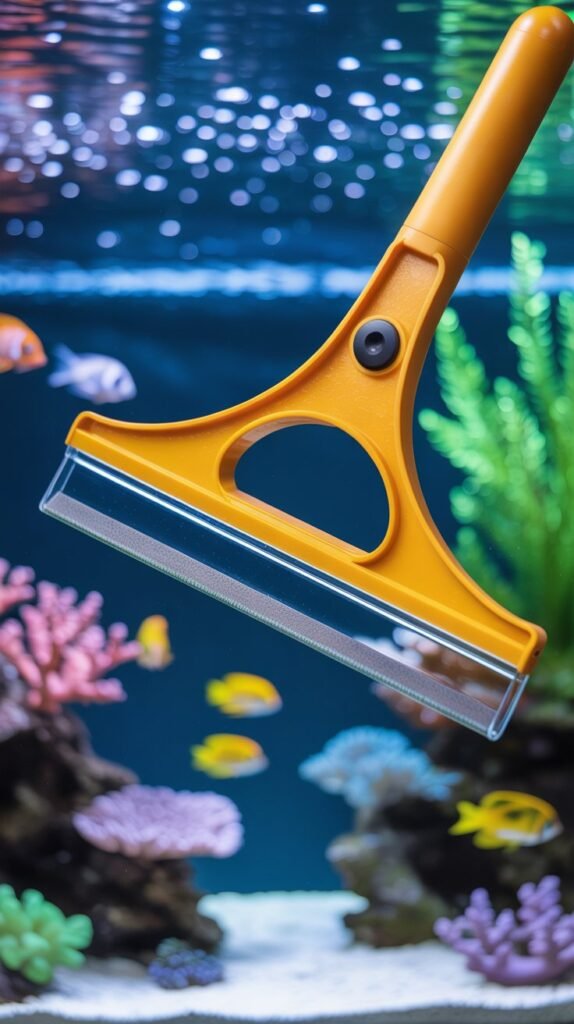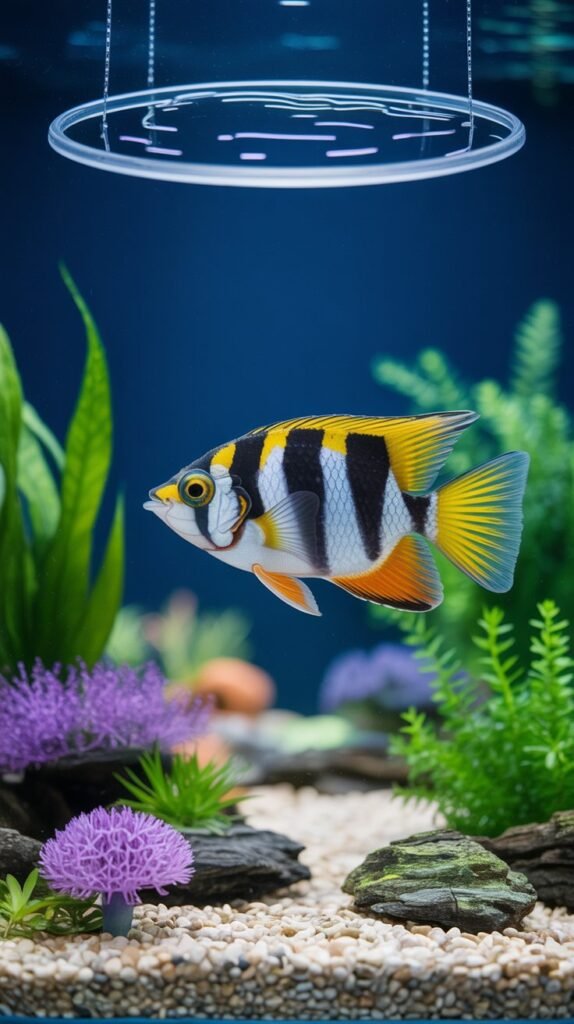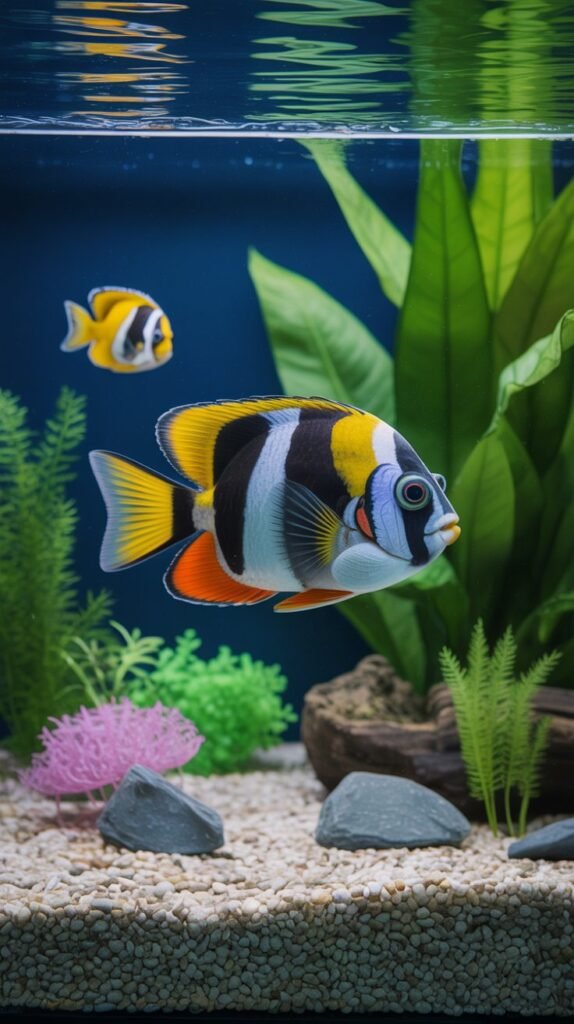Keeping your aquarium clean is not just about aesthetics—it is essential for the health and longevity of your fish and plants. One of the most common challenges aquarium hobbyists face is the buildup of algae, water stains, and debris on the glass walls of the tank. While many tools can help maintain a clean aquarium, an aquarium glass scraper stands out as one of the most effective and convenient solutions.
In this comprehensive guide, we will explore everything you need to know about aquarium glass scrapers: what they are, why they are important, the different types available, how to use them, and tips for choosing the right one for your aquarium.
What is an Aquarium Glass Scraper?
An aquarium glass scraper is a cleaning tool specifically designed to remove algae, dirt, and mineral deposits from the glass walls of fish tanks. These scrapers come in various shapes, sizes, and designs, ranging from simple handheld blades to advanced magnetic cleaners. The purpose is to maintain a clear and polished aquarium environment without scratching the delicate surface of the glass or acrylic.

Unlike regular household cleaning tools, aquarium scrapers are built to be safe for aquatic life. They are typically made from non-toxic materials and designed to work effectively underwater.
Why is an Aquarium Glass Scraper Important?
Owning an aquarium is a rewarding hobby, but it requires consistent maintenance. The glass walls of your aquarium can quickly become covered with green or brown algae, reducing visibility and negatively impacting the overall appearance of the tank. A dirty glass wall can also block light from reaching your aquatic plants, which may stunt their growth.
Here are some reasons why using an aquarium glass scraper is essential:
- Clear Viewing Experience – A clean glass surface allows you to fully enjoy the beauty of your fish and aquascape.
- Healthier Aquarium Environment – Removing algae buildup helps maintain better water quality and reduces stress on fish.
- Efficient Cleaning Tool – Scrapers are designed to remove stubborn algae much faster than sponges or cloths.
- Protects Glass from Scratches – Specially designed scraper blades are safe to use on aquarium glass when used correctly.
- Easy to Use – Most scrapers are lightweight and designed for both beginners and experienced aquarists.
Types of Aquarium Glass Scrapers

Not all scrapers are the same. The type you choose depends on the size of your aquarium, the type of glass (or acrylic), and the kind of algae you are dealing with. Here are the main types of aquarium glass scrapers:
1. Handheld Scrapers
- These are simple tools with a blade or sponge attached to a handle.
- Ideal for smaller tanks or spot-cleaning specific areas.
- They are affordable and easy to use.
- Some models come with replaceable blades for long-term use.
2. Long-Handled Scrapers
- Designed with extended handles, perfect for deep tanks.
- Allow you to clean hard-to-reach areas without getting your hands wet.
- Useful for larger aquariums or tanks with high water levels.
3. Magnetic Glass Scrapers (Mag Cleaners)
- These consist of two magnetic parts: one goes inside the tank, and the other stays outside.
- When you move the outside magnet, the inside magnet scrapes the glass surface.
- Convenient for daily cleaning and prevents you from putting your hands inside the water.
- Effective for light to medium algae buildup.
4. Razor Blade Scrapers
- Equipped with a metal or plastic blade to remove stubborn algae and mineral deposits.
- Highly effective but must be used carefully to avoid scratching the glass.
- Best for tough cleaning jobs.
5. Acrylic-Safe Scrapers
- Specially designed for acrylic aquariums, which scratch more easily than glass.
- Use plastic blades instead of metal ones.
- Gentle but effective in removing algae.
How to Use an Aquarium Glass Scraper
Using an aquarium glass scraper correctly ensures effective cleaning without damaging your tank. Follow these steps:
- Choose the Right Scraper – Select a scraper suitable for your tank material (glass or acrylic).
- Turn Off Equipment if Needed – In some cases, turning off filters and heaters helps prevent accidental damage.
- Start from the Top – Begin scraping at the waterline and work your way down.
- Use Gentle Pressure – Apply steady but gentle pressure to avoid scratching the glass.
- Clean Corners Carefully – Use angled scrapers or small blades to reach tricky corners.
- Rinse the Scraper – After use, rinse the scraper in fresh water to prevent rust or contamination.
Benefits of Using Aquarium Glass Scrapers
- Improved Tank Aesthetics – A crystal-clear tank enhances the viewing experience.
- Effortless Cleaning – Saves time and effort compared to manual scrubbing.
- Long-Lasting Tool – Durable scrapers with replaceable blades can last for years.
- Safe for Fish – Designed specifically for aquariums, reducing the risk of introducing harmful chemicals.
Tips for Choosing the Best Aquarium Glass Scraper

When buying an aquarium glass scraper, consider the following factors:
- Tank Material – Ensure the scraper is safe for glass or acrylic.
- Tank Size – Long-handled scrapers are best for deep aquariums.
- Type of Algae – For tough algae, choose blade scrapers; for light algae, a magnetic cleaner works fine.
- Ease of Use – Lightweight, ergonomic scrapers are easier to handle.
- Durability – Look for rust-proof blades and sturdy handles.
- Budget – Affordable scrapers can work well, but investing in a high-quality tool ensures long-term use.
Common Mistakes to Avoid
- Using Household Blades – These can scratch the glass or introduce harmful substances.
- Scraping Too Hard – Excessive pressure can damage the glass or acrylic.
- Neglecting Regular Cleaning – Allowing algae to build up makes it harder to remove later.
- Using Metal Scrapers on Acrylic – This will cause scratches that ruin the tank’s appearance.
Alternative Cleaning Methods
While aquarium glass scrapers are the most effective, other cleaning tools can complement them:
- Algae Pads and Sponges – Useful for quick cleaning but not effective against stubborn algae.
- Magnetic Cleaners with Blades – A hybrid tool for efficient cleaning.
- Aquarium Snails or Plecos – Natural algae eaters that help reduce buildup.
Maintaining a Clean Aquarium Glass
Prevention is better than cure. Here are some tips to minimize algae buildup:
- Control Lighting – Avoid excessive light exposure, as it promotes algae growth.
- Maintain Water Quality – Regular water changes and filter maintenance help reduce algae.
- Avoid Overfeeding – Excess food contributes to algae growth.
- Introduce Algae Eaters – Snails, shrimp, and algae-eating fish can assist in natural cleaning.
Conclusion
An aquarium glass scraper is a must-have tool for every aquarist who values a clean, healthy, and visually appealing aquarium. Whether you own a small home tank or a large aquascape, having the right scraper makes maintenance easier and ensures your fish live in a safe environment. By choosing the correct type of scraper and using it properly, you can enjoy crystal-clear views of your underwater world without the frustration of algae-covered glass.
FAQs About Aquarium Glass Scrapers
Q1. Can I use a regular razor blade instead of an aquarium glass scraper?
No, regular blades may rust quickly and scratch the glass. It’s better to use scrapers designed for aquariums.
Q2. How often should I use an aquarium glass scraper?
You should clean your aquarium glass once or twice a week, depending on algae buildup.
Q3. Are magnetic glass scrapers safe for large aquariums?
Yes, magnetic scrapers work well for large tanks, but ensure the magnet strength matches your glass thickness.
Q4. Can I use a scraper on an acrylic tank?
Yes, but only use scrapers designed for acrylic surfaces with plastic blades.
Q5. Do aquarium scrapers harm fish?
No, they are safe for fish as long as you use them carefully and avoid disturbing the fish too much.
Q6. How do I prevent algae from building up on glass?
Maintain proper lighting, avoid overfeeding, and keep water quality stable to minimize algae growth.
Q7. What is the best scraper for tough algae?
Razor blade scrapers are the most effective for removing stubborn algae.

